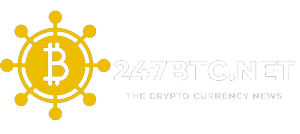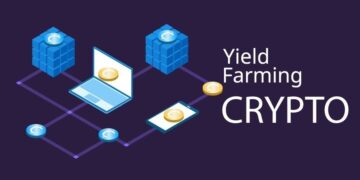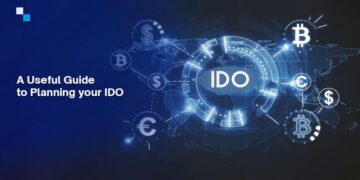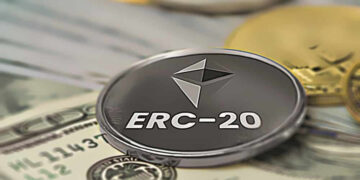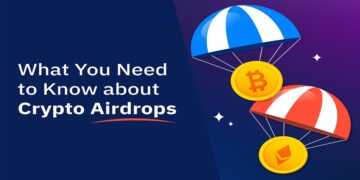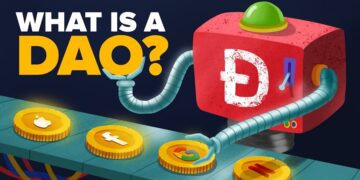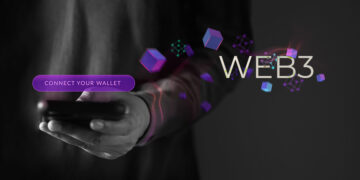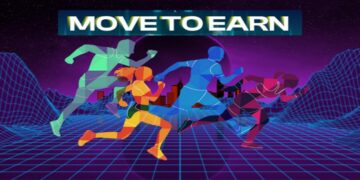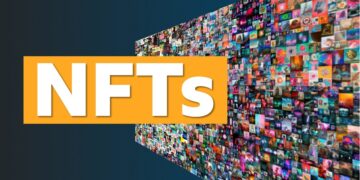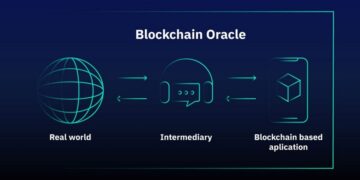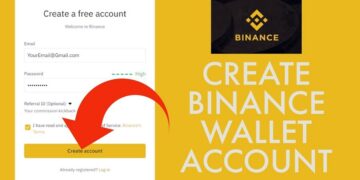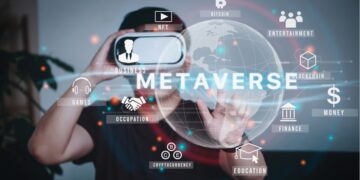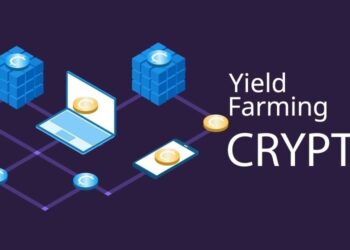Non-fungible token (NFT) art are digital assets stored on a blockchain that depict physical or non-physical items, such as digital drawings, paintings, music, film, poetry, or books. The NFT art enables artists to sell or lease their work beyond the constraints of the physical domain. This piece aims to delve into the world of NFT art and elucidate how one can participate in this burgeoning market.
Table of Contents
ToggleWhat is an NFT?
NFTs are comparable to Bitcoin in terms of volatility but cannot be traded. Nevertheless, their distinguishing characteristic is that they are exceptional and proprietary items that possess distinct values and uniqueness which cannot be replaced. NFTs are associated with digital media such as images, music, and videos, and can even be employed to grant the owner entry to select products, tickets to live or digital events, or acting as an identifier for tangible assets like cars.

The majority of these entities are integrated into the Ethereum blockchain, which can be likened to bitcoin and dogecoin as a form of currency. What differentiates an NFT is its correlation to a specific token. NFTs possess metadata that is subjected to a cryptographic hash function. An algorithm capable of computing an exclusive combination of letters and numbers. These NFTs provide the opportunity to facilitate asset interoperability among different platforms.
What’s the difference between NFTs and traditional art?
There exist several distinctions between NFT art and traditional art. One key difference is that NFT art presents the potential for greater profitability, as the artist has control over the commission percentage and is able to receive royalties from each resale.
Countless additional dissimilarities between the two forms of art include:
- Storage: Conventional forms of art necessitate designated storage areas, whereas NFT artworks necessitate a digital file that is secured by blockchain technology for preservation.
- Selling venues: Traditional artworks can be marketed and sold through several channels, such as online platforms, art exhibitions in galleries, and auctions conducted by art houses. Conversely, Non-Fungible Token (NFT) art solely exists and is sold in digital form on NFT marketplaces, which offer a unique shopping experience for buyers in a rapidly evolving art world.

- Audience: The internet provides a vast platform for NFT art to be exposed to numerous potential buyers, while traditional art displayed solely in galleries or auction houses may face limitations in terms of audience reach.
- Market volatility: NFTs possess a value that transcends pure economic factors, as their market can be influenced by various contextual factors such as the prevailing social climate and relevance.
How Is an NFT Different from Cryptocurrency?
The dissimilarity between NFTs and cryptocurrencies pertains to their inherent characteristics and intended role within the blockchain ecosystem. Despite both being constructed using blockchain technology, they perform discrete operations.
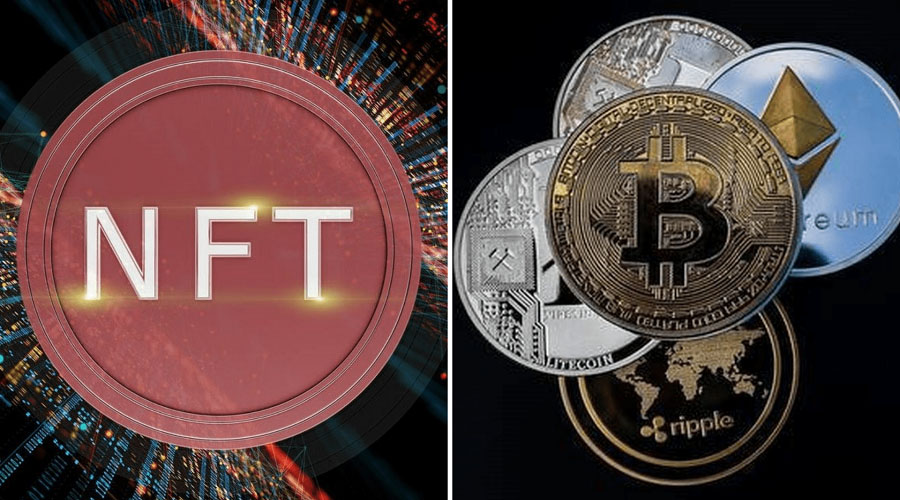
Digital currencies such as Stablecoin, Bitcoin, and Ethereum are a form of cryptocurrency that function as a medium of exchange. These currencies possess the property of fungibility, meaning that each unit can be interchanged with another unit of the same cryptocurrency while holding the same value. Cryptocurrencies are widely used for an array of transactions, including purchases, investments, and value transfers. Additionally, they can be easily bought, sold, and converted into traditional currencies.
NFTs are unique digital assets that serve as proof of ownership or authenticity of a particular item or piece of content, such as art, collectibles, or virtual real estate. Unlike cryptocurrencies, NFTs cannot be exchanged one-to-one with other tokens due to their non-fungibility, meaning that each NFT is distinct and carries a unique value and characteristics that renders it irreplaceable and individual.
NFTs acquire their inherent worth through factors such as exclusivity, one-of-a-kind characteristics, and interest from buyers in the marketplace. These digital assets are commonly traded on specialized platforms and marketplaces, frequently employing cryptocurrencies as a means of exchange. It is important to note that, unlike cryptocurrencies that may be freely traded on various exchanges. NFTs only denote possession of a specific item and cannot be exchanged directly for another NFT in a one-to-one transaction.
How to create an NFT
If one’s intention towards creating an NFT is merely based on the trend and an indistinct idea, it is crucial to take into account a few significant considerations. The foremost aspect to consider is the transaction fees. Although the platforms that we will discuss today enable users to develop NFTs without any charge, the charges for selling them might differ.
It is plausible to expend a substantial amount of monetary resources in the establishment of the business without being able to vend a single NFT
The majority of Non-Fungible Tokens (NFTs) are transacted on the Ethereum blockchain, with exceptions to the rule discussed in an upcoming section. Each action on the Ethereum blockchain requires a fee called “gas,” which is directed to the miners. The quantity of gas needed for a particular transaction and the resulting expense can differ significantly. Virtually every blockchain activity, including creating, transferring, and purchasing NFTs, requires a payment of gas, though we will explore some alternatives for producing NFTs shortly.
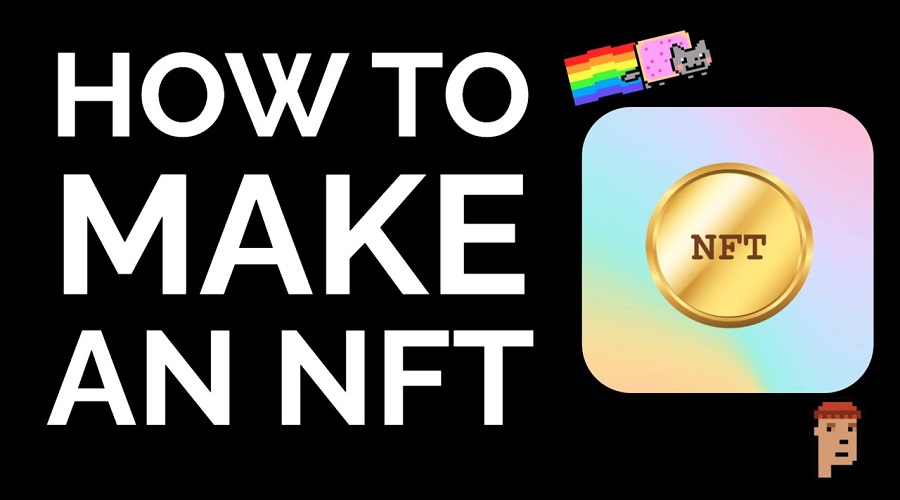
It is important to be aware that the payment of gas fees cannot guarantee a 100% successful transfer. Though additional payment can increase one’s chances of a successful transfer, it is never a guaranteed outcome. It should be noted that most transactions are successful. However, in the event of an incomplete transaction, the paid gas fees will not be refunded.
The environmental implications of NFTs also warrant consideration. Predominantly operating on the Ethereum blockchain, which features a resource-intensive “proof of work” mechanism. The leading and user-friendly NFT markets impose significant energy demands. While the impact of individual NFT transactions on the ecosystem’s cumulative energy consumption remains up for discussion, adopting the Ethereum infrastructure for NFT development exacerbates the platform’s carbon footprint.
There exist certain blockchains that employ alternative mechanisms requiring lesser energy consumption, while Ethereum intends to shift to an enhanced proof of stake system in the future. Nevertheless, the transition hasn’t been actualized yet, and this is why some individuals may express discontent when others make the choice to vend NFTs.
Elect a suitable platform to market your NFT
Numerous platforms exist that permit the sale of non-fungible tokens (NFTs) across various blockchains, making it nearly unfeasible for a singular guide to encompass them all, let alone suggest the most fitting one for your undertaking. In this guide, we will be exploring two of the more widespread marketplaces. But it’s essential to note that alternatives exist should neither of these platforms align with your requirements. Among these are AtomicHub on the Wax blockchain and Solsea, which is grounded on Solana.

It should be brought to your attention that our guide will provide you with instructions on conducting basic operations. Nevertheless, it is advisable to be mindful that delving deeper into NFT markets can lead to complex procedures beyond the scope of this guide, such as vending an NFT created through OpenSea on Rarible, or programmatically creating assortments like Bored Apes, among other things. We want to clarify that this guide is not intended to be an all-encompassing compilation of selling NFTs, but instead a starting point to direct you towards the right direction.
OpenSea and Rarible offer the convenience of creating NFTs on Ethereum without incurring any charges through their “lazy minting” systems. By using this system, users can place their NFTs for sale without them being written to the blockchain, thus avoiding associated fees. When a buyer purchases the NFT, the cost of writing it to the blockchain and transferring it to the buyer is combined. This arrangement eliminates the possibility of wasting funds on minting an NFT that may not sell, which typically costs between $10 and $30, or more, thus providing a cost-efficient solution for NFT creators.
Do I have to use a marketplace site to create an NFT?
From a technical perspective, it is feasible to generate a personal smart contract, transfer it to the preferred blockchain, and issue tokens by leveraging it. However, this path can be challenging for non-technical individuals and possibly not the best approach. For most individuals, it is advisable to consider utilizing one of the platforms highlighted earlier.
Set up a wallet
When dealing with cryptocurrencies and NFTs, wallets serve as the convenient tool for storage. Although 247btc offers a comprehensive overview of wallet functionalities and available alternatives, the critical aspect to consider when starting is the compatibility between the wallet and blockchain. Therefore, it is crucial to utilize a wallet that corresponds with the blockchain being used for secure handling of valuable digital assets.
The MetaMask wallet is extensively supported by Ethereum-based applications such as OpenSea and Foundation, and can be accessed both as a Chrome/Firefox extension or an iOS/Android app. Metamask provides its own wallet that can be utilized as an extension or app, and is compatible with multiple platforms. In the event of a broad interest in the crypto market, Metamask’s wallet is suggested as it offers support for blockchains beyond Ethereum, such as Bitcoin.
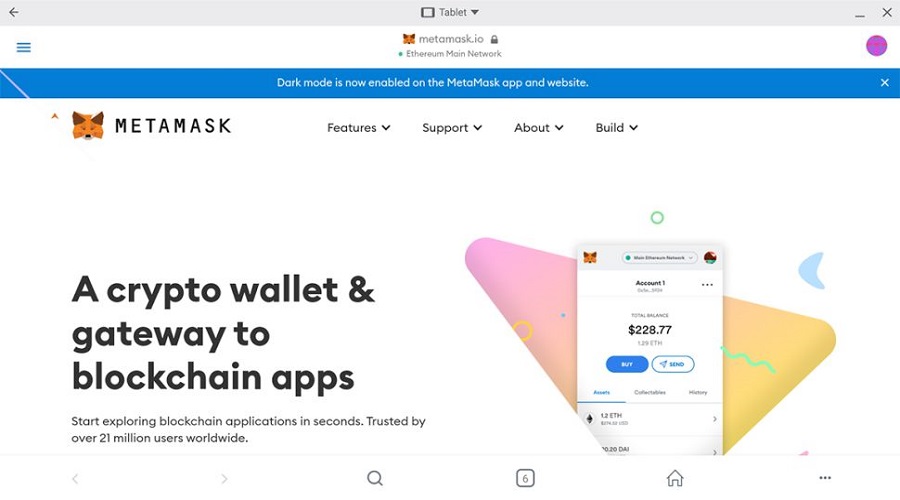
MetaMask and Coinbase Wallet’s setup processes are similar. Once you have the browser extension or app installed (MetaMask can be downloaded here, Coinbase Wallet here), click or tap the “Create new wallet” button. Coinbase will ask you for a username, and both will ask you for a password, which you’ll want to make sure is secure.
Both MetaMask and Coinbase provides a “seed phrase” consisting of 12 random words, which should be kept secure, as it allows account recovery in case of uninstallation of the app or setup of the wallet on a new device. It is recommended to save the phrase in a secure location such as a physical safe or password manager. MetaMask requires the repetition of the phrase, while Coinbase Wallet offers the option of saving an encrypted copy on the cloud when setting up via the app. If manually backing up or setting up via the extension, the process would be similar to MetaMask, requiring manual re-entry of the seed phrase.
In the event that you misplace your password and/or security phrase, both MetaMask and Coinbase Wallet will be unable to assist you, leaving you stranded. Consequently, you will forfeit access to any cryptocurrencies or NFTs held within that wallet, as well as the accounts linked to it. It is, therefore, imperative that you take the necessary steps to keep your password and secret phrase secure.
Ultimately, the wallet will be accessible to you, albeit without any contents present as of yet.
Connect your wallet
Once you have established your wallet, it is advisable to link it with your intended NFT marketplace. Popular marketplaces such as OpenSea and Rarible have simplified this process by enabling users to connect their wallets with ease. By clicking on the Create button located on the top left of the platform, users are prompted to establish a connection with their wallet. Subsequently, a list of compatible wallets is presented and selecting your wallet will initiate the connection process.
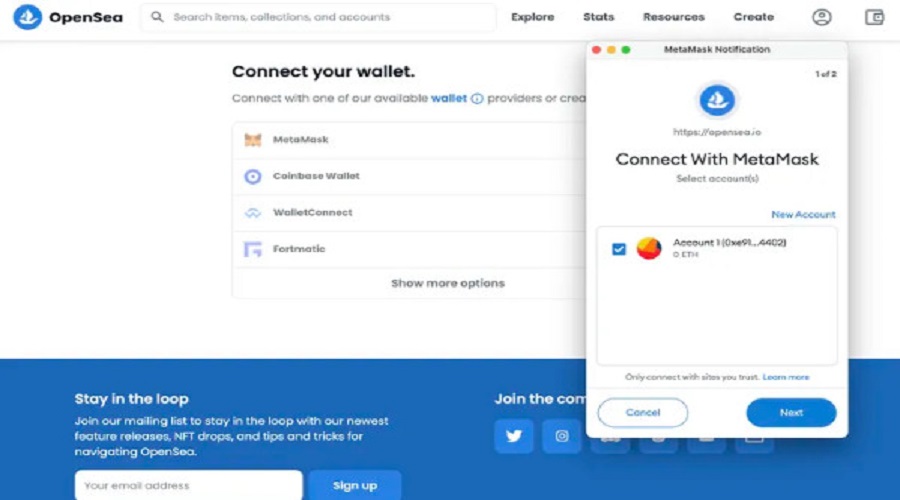
In the event that you have previously installed either Metamask or the extension for Coinbase, you will receive a prompt requesting permission to link your digital wallet with the marketplace. The process requires only a small number of clicks to complete. Furthermore, for those using the Coinbase Wallet application, access to the marketplace can be established through utilization of the QR code scanner. This feature is commonly found located towards the right-hand side of your balance on the main wallet interface.
In the interest of cautionary measures for future scenarios, exercise caution if you receive a request to connect to your wallet without prior expectation, as there is a possibility of scam artists attempting to gain access to your funds or NFTs. If the website you are on is trustworthy, then you should generally remain protected from harm (unless there are signs of something being awry – in this case, it is highly recommended that you verify transactions for legitimacy). However, if you find yourself being asked for wallet access on an unfamiliar website, it is advisable to reconsider before consenting.
Create an NFT
Upon successful connection of your wallet, you will be directed to the designated page for the creation of an NFT. In the event that this page is not immediately accessible, simply locate the Create button which can be found in the upper right-hand corner on both platforms and click it to be directed to the appropriate page.
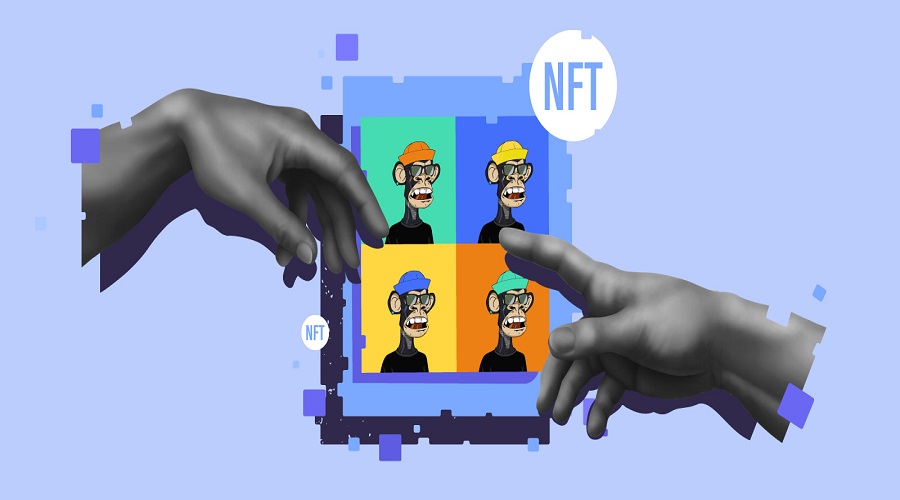
Prior to commencing the NFT creation process, it is essential to note that both platforms enable the formation of collections, which are essentially as their name suggests. Should you wish to generate a set of NFTs, you may utilize a collection on either Rarible or OpenSea. On Rarible, the creation of a collection can be initiated directly from the NFT creation interface, where the NFT in progress will be incorporated into the collection. Whereas, on OpenSea, you must navigate to your profile picture situated in the top right corner and then proceed to “My Collections” to commence creating a new collection.
This guide excludes coverage of collections, however, OpenSea has the feature to place your NFT into an unspecified collection if no specific one is specified. This can be edited or moved later. Additionally, Rarible allows for selling an NFT as a Rarible Single without a collection.
Now, let’s finally get started on our NFT.
No Code NFT Collection Generator – AI technology changes the influence of NFT
What is NFT AI Art Generator?
NFT AI Art Generators refer to software applications, online services, or tools explicitly created to facilitate the effortless creation of NFTs from either text or sample images. These generators are powered by artificial intelligence, hence dubbed AI art generators.
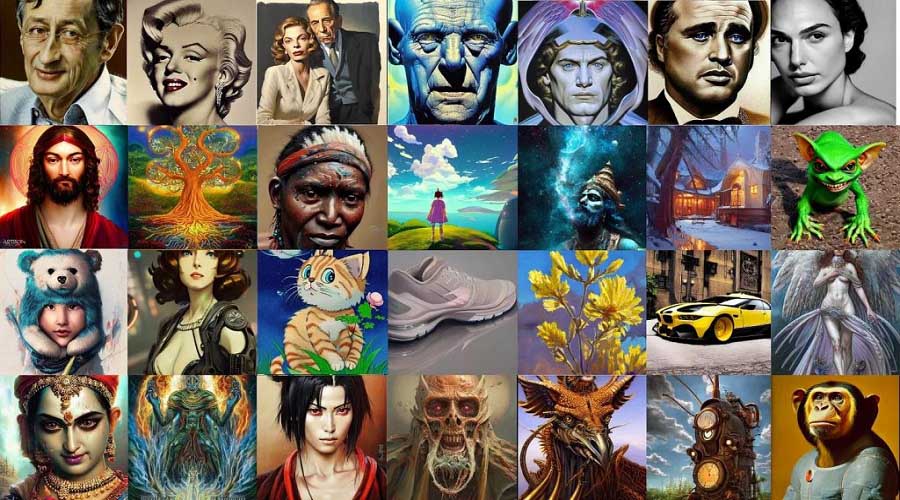
The increasing popularity of Non-fungible tokens (NFTs) has led to the development of numerous applications that enable users to create unique artworks using NFTs, with the potential to earn cash from their sale. The most noteworthy advantage is that AI-generated NFTs do not necessitate a paintbrush.
How to Create NFT Collection by Art Generator?
Artificial intelligence, commonly abbreviated as AI, denotes the capacity of a computer system that is not human-made to execute intricate operations and exhibit human-like mental faculties including learning, reasoning, sensing, and resolving problems.

The concept of artificial intelligence (AI) is founded on the premise that machine learning algorithms have the capacity to generate unique and imaginative photographs. This is achievable by subjecting these algorithms to large sets of visual data using general adversarial networks (GANs). Through extensive training, similar to how a painter hones their craft over years, AI can create novel visual content that has not been produced before.
How Do NFT Generators Work?
Generating an AI NFT is a simple task that can be accomplished by utilizing one of the most advanced NFT generators presently available. By entering keywords or phrases of interest, the AI art generator will employ complex algorithms to evaluate numerous works of art, and produce unique visual interpretations of the source text. These new visuals serve as distinctive and original renditions, showcasing the power of cutting-edge technology in the field of art creation.
The AI NFT app provides its users with the ability to generate unique abstract works of art by utilizing selected texts or photos. The produced artwork, which is distinct and inimitable, can then be readily minted on OpenSea.
Best NFT Generator Tools
Appypie NFT Generator
Appypie is a software application that offers the ability to create non-fungible tokens (NFTs) for digital artwork without requiring any knowledge of coding. Its NFT generator allows users to make custom NFTs with ease. The NFT builder from Appypie provides an extensive range of resources needed to develop exceptional, captivating, and unique NFT artworks. Appy Pie Design also offers a template-based NFT art creator that enables users to craft visually stunning NFT images and collections.
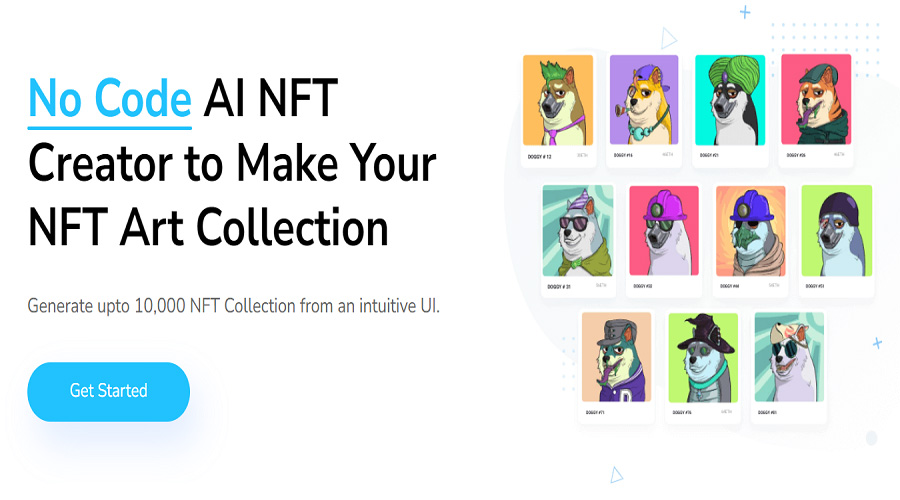
Pros
- Free (just pay gas) and PRO
- No-Code
- Templates
- Easily Scalable up to 10000 outputs
- 24*7 Customer Support
- Rarity Builder
- Multiple Blockchains
- NFT Airdrop tool
Fotor NFT Creator
Fotor offers an NFT maker that facilitates the quick and easy creation of NFT Art, enabling users to unleash their creativity. The process involves utilizing a unique model method and machine learning technique in combination with preferred oil painting techniques. Upon uploading an image and selecting a preferred art effect style, the AI NFT maker automatically generates NFT artwork that delivers exceptional results. The user is guaranteed to be astounded by the quality of the final product.

Pros
- Free (just pay gas), PRO and PRO+
- No-Code
- Rarity Builder
- With No Sign Up
- Multiple Blockchains
AutoMinter NFT Generator
The AutoMinter tool is highly acclaimed for its ease of use in creating and launching NFT collections. Esteemed innovators, artists, and communities worldwide have expressed confidence in the tool’s reliability. Its flexibility makes it possible to modify rarity, qualities, and metadata to elevate the success of the collections. This tool offers the added convenience of allowing website visitors to mint NFTs directly from your website, using the customizable mint pages embedded with the mint button.

Pros
- Free (just pay gas)
- Simple and no-code
- Fully Configurable
- Rarity Builder
- Easily Scalable up to 10000 outputs
- Multiple Blockchains
- NFT Airdrop tool
Bueno No-Code NFT Tool
The Bueno Generator simplifies the coding process and offers a user-friendly interface for creating NFTs, enabling users to concentrate on the important aspects of art and community. It enables you to upload multiple layers, control rarity, view a preview, and swiftly export your NFT artwork and metadata. With unlimited creative freedom, one can create as many images as desired. The Bueno Generator is a suitable tool for launching a 1/1 series or massive PFP projects.
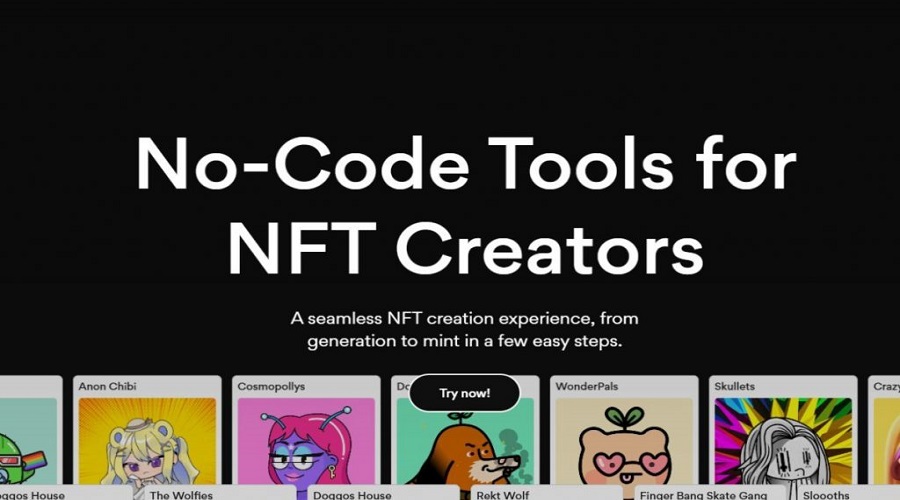
Pros
- Free (just pay gas) and 10,000 tokens for 1 ETH
- Simple and no-code
- Fully Configurable
- Rarity Builder
- Advanced trait rules
- Easily Scalable up to 10000 outputs
- Multiple Blockchains
- Tutorials and Guides
- Allowlists and Surveys
Generate NFT Online
Artists can utilize Generate NFT Online service to effortlessly create their own NFT collections without any expense or the need to personally search for a developer or acquire coding skills. The service supports the creation of NFTs that comprise of images, gifs, and videos. Within half an hour, you can easily generate and mint your NFT collection with ease.
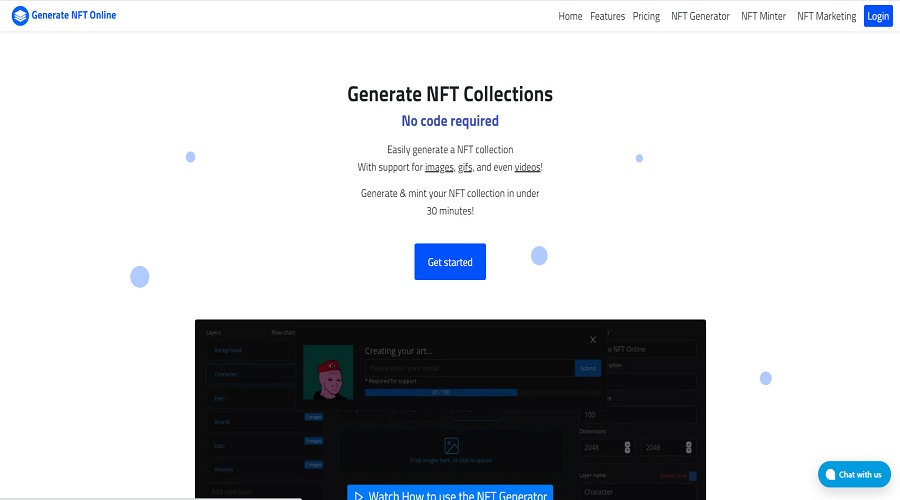
Pros
- Free and PRO
- Simple and no-code
- Rarity Builder
- Advanced trait rules
- Scalable up to 10000 outputs
- Multiple Blockchains
- Lazy Minting
- Presales & Whitelists
UniqMyNFT No-Code Generator
UniqMyNFT functions as a highly efficient NFT art creator, allowing users to generate an NFT collection in mere minutes. Its user interface enables simple adjustment of layer and attribute rarity configuration. Additionally, UniqMyNFT exports metadata containing a variety of rich attributes that are readily compatible with prevalent Ethereum, Polygon, and Solana markets.
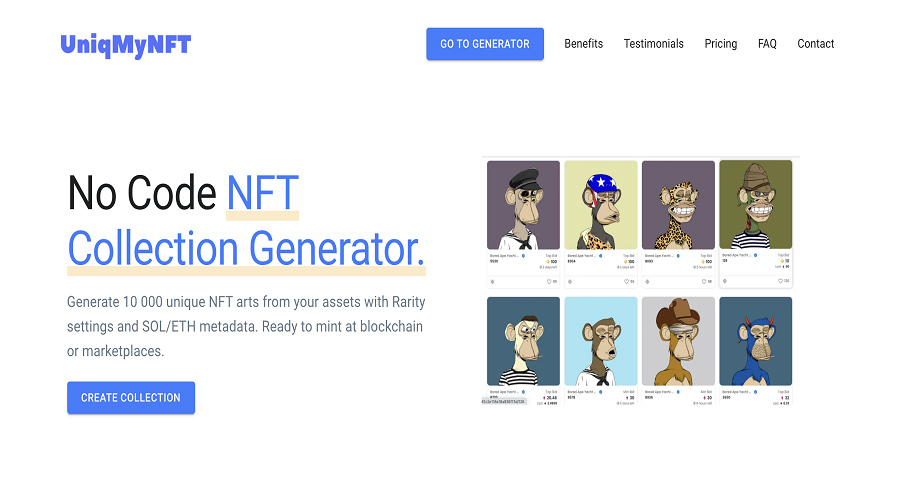
Pros
- Paid Only
- Fast and no-code
- Rarity Builder
- Advanced trait rules
- Scalable up to 10000 outputs
- Multiple Blockchains
- Email Support
NFT-Inator Free Generator
The NFT-Inator is a comprehensive tool for managing NFTs. This toolbox provides the capability to modify attributes and rarity, as well as export metadata to generate free customized designs. The exported metadata includes rich attributes and custom names, which are fully compatible with popular markets for Ethereum, Polygon, and Solana. NFT-Inator requires no upload to create human-readable layers and names from your files automatically.

Pros
- Free Only
- Fast and no-code
- Rarity Builder
- Scalable up to 10000 outputs
- Multiple Blockchains
- Human names for images
- Simple folder structure
Genfty NFT Generator
Genfty offers a user-friendly platform for generating randomized and unique 10K NFT collections within seconds, without the need for any coding knowledge. Its objective is to simplify and democratize the process of generating NFT arts for all types of users, regardless of their technical expertise or programming background. Genfty enables everyone to create their own original collection of NFTs, ensuring that there are no duplicates, and provides the option to download them via a zip file with the required metadata files or import them directly into IPFS. The platform thus revolutionizes the NFT creation landscape by streamlining the process and making it accessible to all.

Pros
- Free, PRO and Premium
- No-Code
- Easy and Fast to use
- No Account Needed
- Rarity feature
- Scalable up to 10000 outputs
- Multiple Blockchains
- Realtime preview
- Simple folder structure
What is Yield Farming? Gain a comprehensive understanding of the terminology associated with Yield Farming
The concept of Yield Farming, prominent Yield Farming platforms, and the associated risks and opportunities are explored in this article,...
Read moreWhat is Initial DEX Offering (IDO crypto)? Does playing IDO really give you a 100% chance of winning?
One may inquire as to why the Initial DEX Offering (IDO) has gained widespread popularity and whether investing in IDO...
Read moreWhat is ERC – 20? Advantages, disadvantages & how to create ERC- 20 network tokens
In this article, we will explore ERC-20 and ERC-20 tokens along with their applications and advantages and disadvantages. For those...
Read moreWhat is Airdrop Crypto? Instructions for making airdrop coins in the Crypto market
What is Airdrop and how many forms of Airdrop Crypto exist? Discover the limitations and effective instructions on how to...
Read moreWhat is DAO? Limitations and Investment Potential of DAO in Crypto
Understanding the terminologies used in the field of cryptocurrency is crucial for individuals involved in Crypto market participation or intending...
Read moreWhat is zkEVM? Classification of groups zkEVM
ZkEVM is an abbreviation for the term "Zero-Knowledge Ethereum Virtual Machine". It is a protocol that enables the execution of...
Read moreWhat is web3 technology? How to invest in Web3 in 2023
The emergence of Web 3.0 following Web 2.0 has brought about increased flexibility and superior interaction capabilities compared to its...
Read moreWhat is move to earn? best move to earn crypto in 2023
In the current GameFi market, it is possible to combine the seemingly unrelated tasks of earning money and improving one's...
Read moreWhat does NFT crypto stand for: Clarifying the Significance of Non-Fungible Tokens (NFTs) through technical examination
Non-fungible token (NFT) art are digital assets stored on a blockchain that depict physical or non-physical items, such as digital...
Read moreWhat are play to earn (P2E) Games? How to earn money with play game crypto?
Play to Earn has emerged as a popular trend in mid-2021, leading to a notable increase in the activity of...
Read moreWhat is an oracle in blockchain? Top blockchain oracle projects 2023
The intended function of blockchain technology was never to operate in isolation from the larger economic ecosystem. Despite the challenges...
Read moreBinance account sign up: What is binance account? how to create binance account?
Numerous cryptocurrencies are supported by Binance and its proficiency in ensuring swift exchange operations between volatile coins and fiat currencies...
Read moreWhat is a defining feature of the Metaverse Crypto? What does the term Metaverse refer to?
We have heard numerous prominent figures, such as Mark Zuckerberg, CEO of Facebook, and Satya Nadella, CEO of Microsoft, expound...
Read moreWhat are AI Tokens? Best AI Coins & Tokens to Invest in
The predicted impact of artificial intelligence (AI) is expected to revolutionize various sectors, including the field of cryptocurrency. The AI...
Read moreWhat are Fan Tokens? How Binance Fan Tokens are Revolutionizing the World of Sports and Entertainment?
The Fan Token is a term that has been shared by the CEO of the cryptocurrency exchange CZ on Twitter,...
Read more